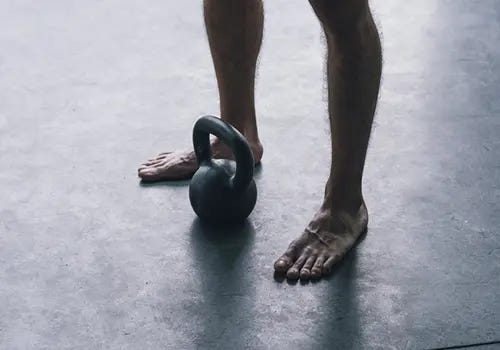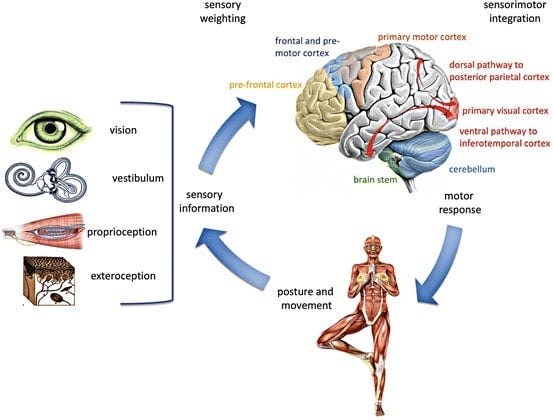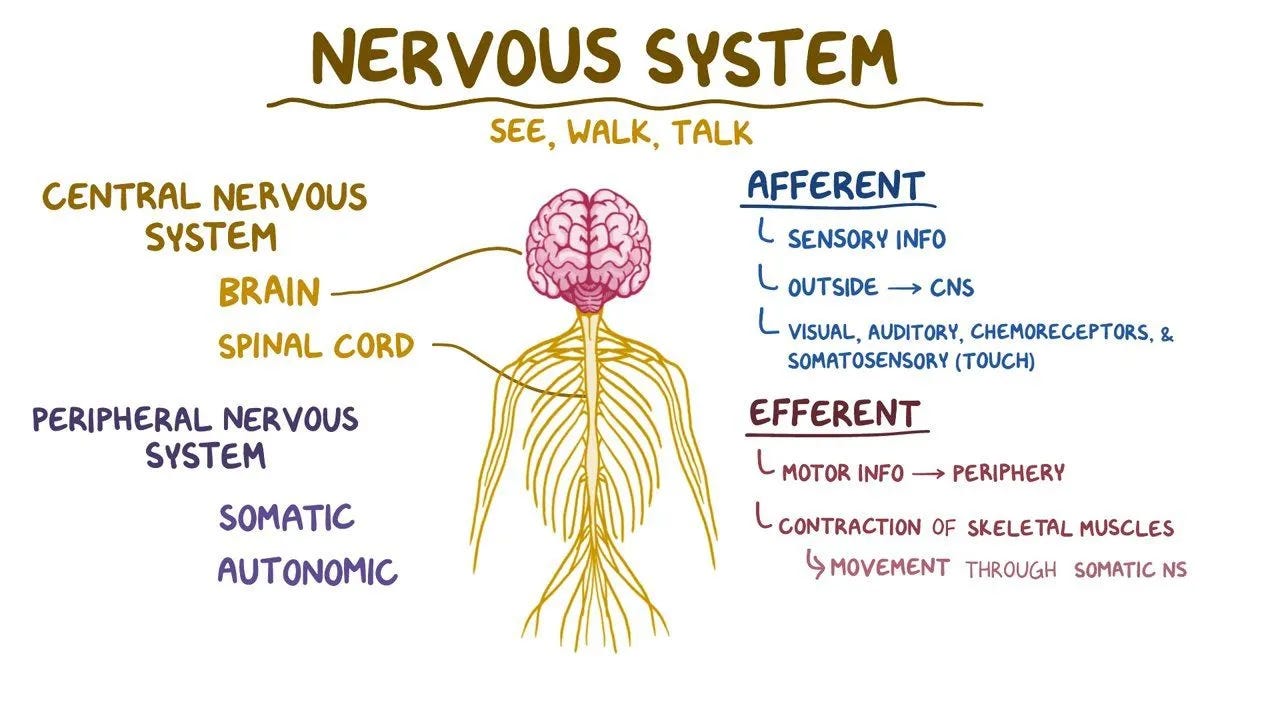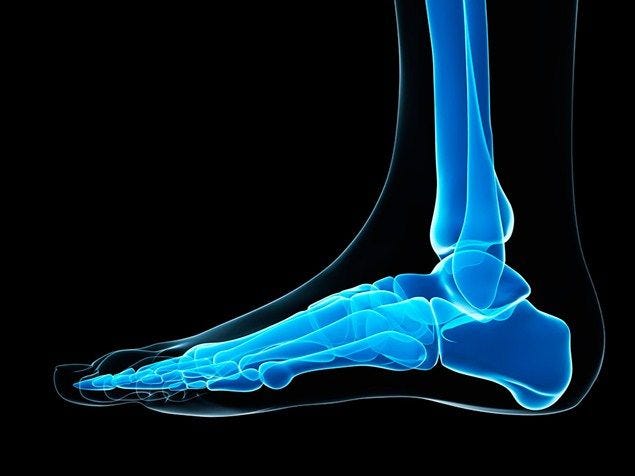
In the last year approximately, I have been experimenting with having clients perform some exercises (i.e., standing) without shoes. I have read about the benefits, but never truly was “sold” on why. I believe I did not appreciate the concept of proprioception, and its relationship to the sensorimotor system.

The sensorimotor system contains two fundamental pathways, which relay information: the afferent (i.e., reception of information) and efferent (i.e., propagation of information, in the form of movement) systems (Page, Frank, & Lardner, 2010). Information about the body and its relationship to the environment provides information (i.e., input) on position sense and movement; the information is derived from mechanoreceptors and muscle receptors in the joints and muscles, respectively, as well as position on movement from the skin exteroreceptors (Page et al., 2010). Such receptors (i.e., mechanoreceptors, and exteroreceptors) are found in joints like the ankle and sole of the foot, respectively.

The sensorimotor system uses the central nervous system (CNS) and peripheral nervous system (PNS) to gather information (i.e., afferent pathway). The process of information uptake is commonly known as proprioception (Page et al., 2010). Page et al. (2010) noted that proprioception from the foot provides several benefits: afferent input from the sole of the foot affects postural awareness, and lower limb afferents provide substantial information on to maintain upright stance and critical in perceiving postural sway. Finally, Page et al. (2010) ended by noting that barefoot training improved movement discrimination.

Having considered what information the foot and ankle provides to the CNS, I tend to have clients train barefoot. I attempt this approach especially if movement looks poor, and/or if I know the client sustained ankle injuries (joint injuries and muscle weakness can create impairments in proprioception) prior to training (Page et al., 2010). I have found barefoot training can help during motions in single leg stance (i.e., single leg deadlift, forms of plyometric exercise) or half-kneeling/split squat stances. To keep things simple for the client, I explain how difficult it would be if they had to type on a keyboard with winter gloves on. They “get” this analogy when trying to compare it to how difficult it can be for the body to move (i.e., lack of proprioception) wearing shoes with thick soles.
References
Page, P., Lardner, R., & Frank, C. (2010). Assessment and treatment of muscle imbalances: The Janda approach.Champaign, IL: Human Kinetics.
-Michael McIsaac
